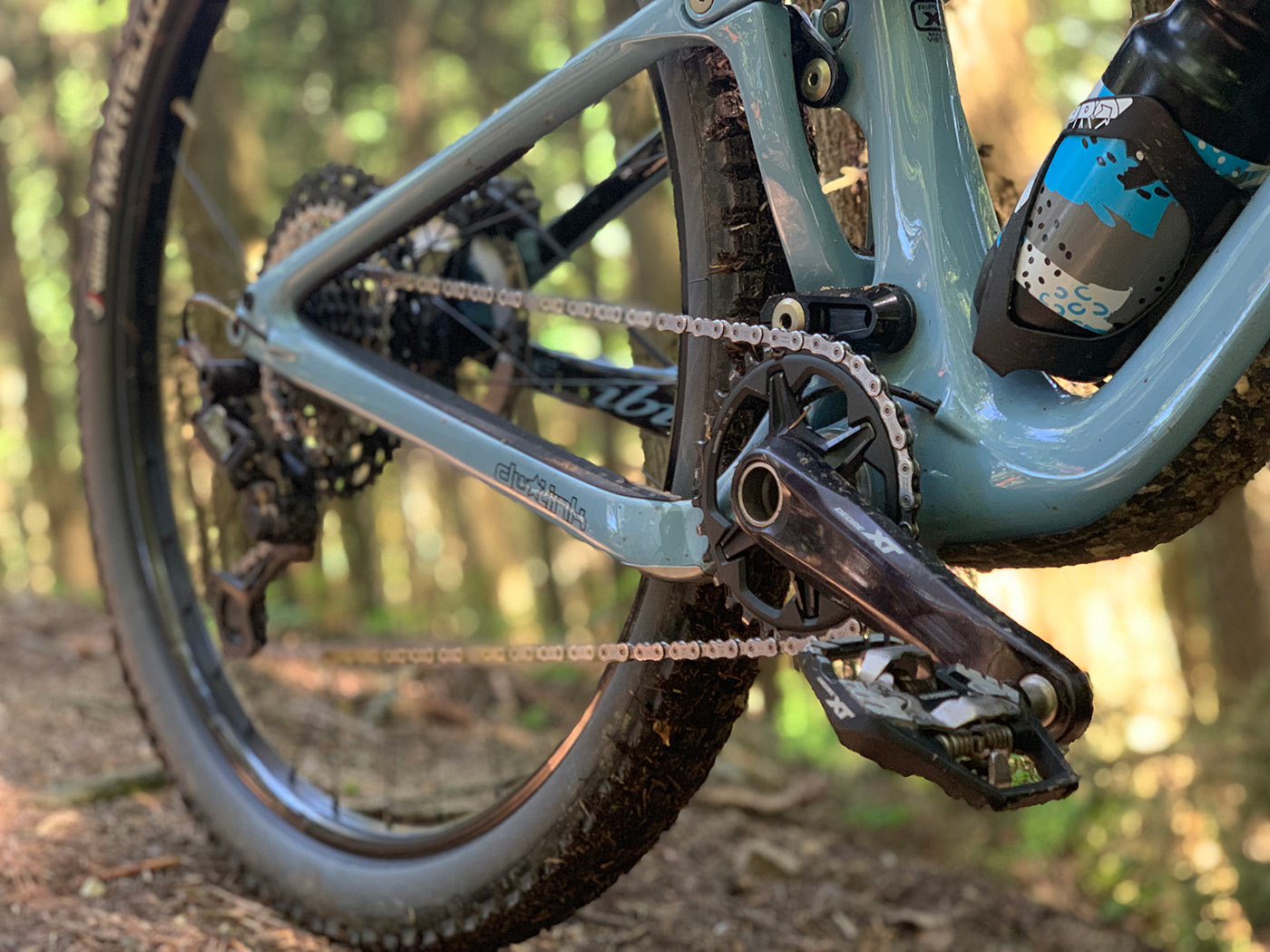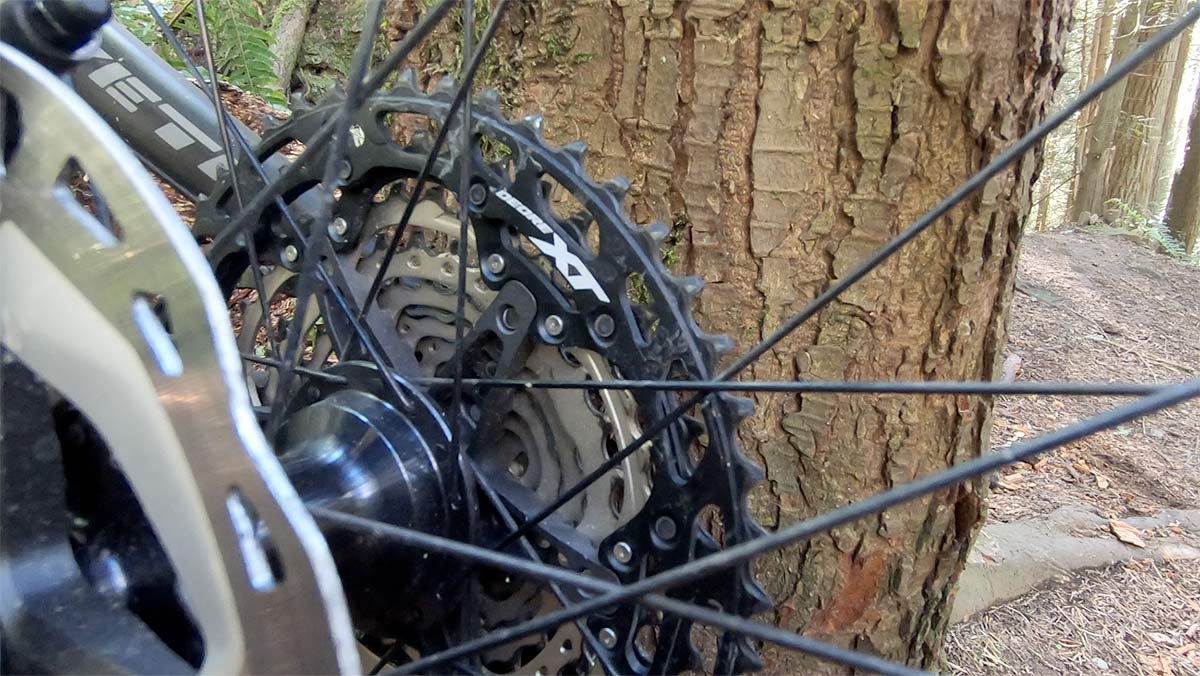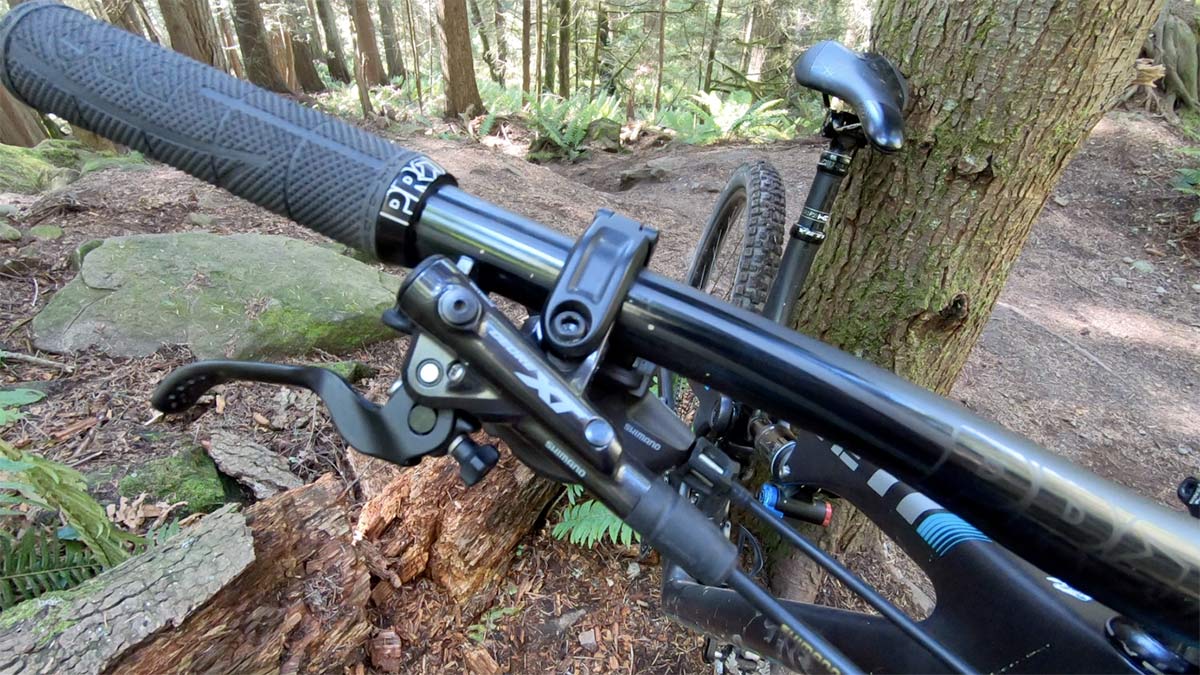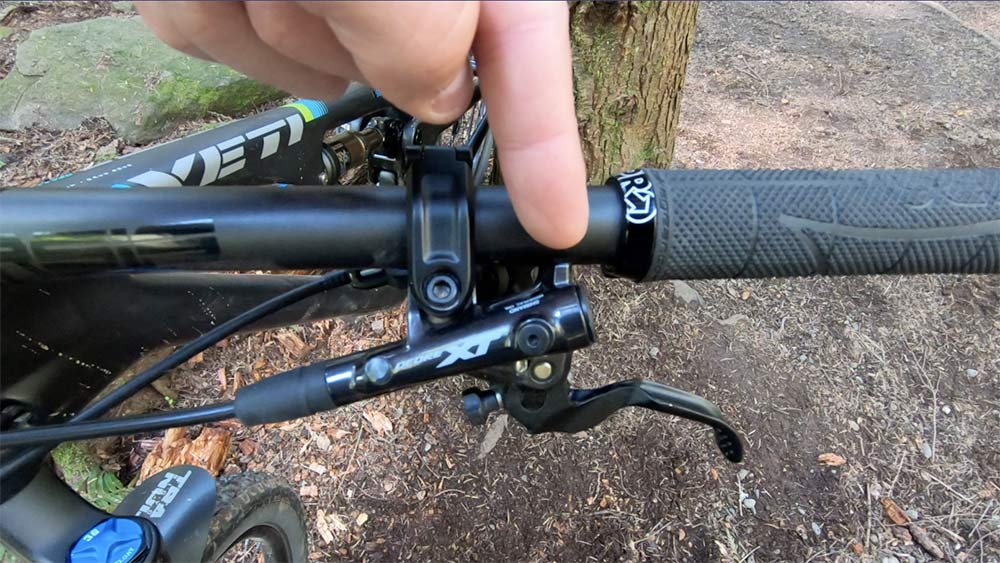The new Shimano XT M8100 and SLX M7100 mountain bike groups bring Shimano back into the game. Fortunately, with technology developed for their flagship XTR getting not just used but improved, these two complete groups bring exactly what riders have been asking for. And they do it at two price points that cover the biggest part of the market.
For Shimano, it’s about being a complete mountain bike drivetrain and brake system as a group, and giving people options where they’re needed. They’re fully aware of how the other “S” company has affected their market share at the upper end of the market. And how the delays in delivering XTR affected adoption at the highest end. The new XT and SLX 12-speed groups aim to change that in every possible way.
Shimano XT M8100 tech overview
Shimano introduced the modern freehub body in 1978, indexed shifting in 1984, Hyperglide in 1989, SPD in 1990. Among other things. Then XTR introduced a whole bunch of new stuff for mountain bike shifting and drivetrain performance. Now, all of that comes together for the best XT and SLX groups ever, with more options for more bikes right out of the gate. We’ll cover XT first, then summarize the key differences for SLX at the bottom of this post.
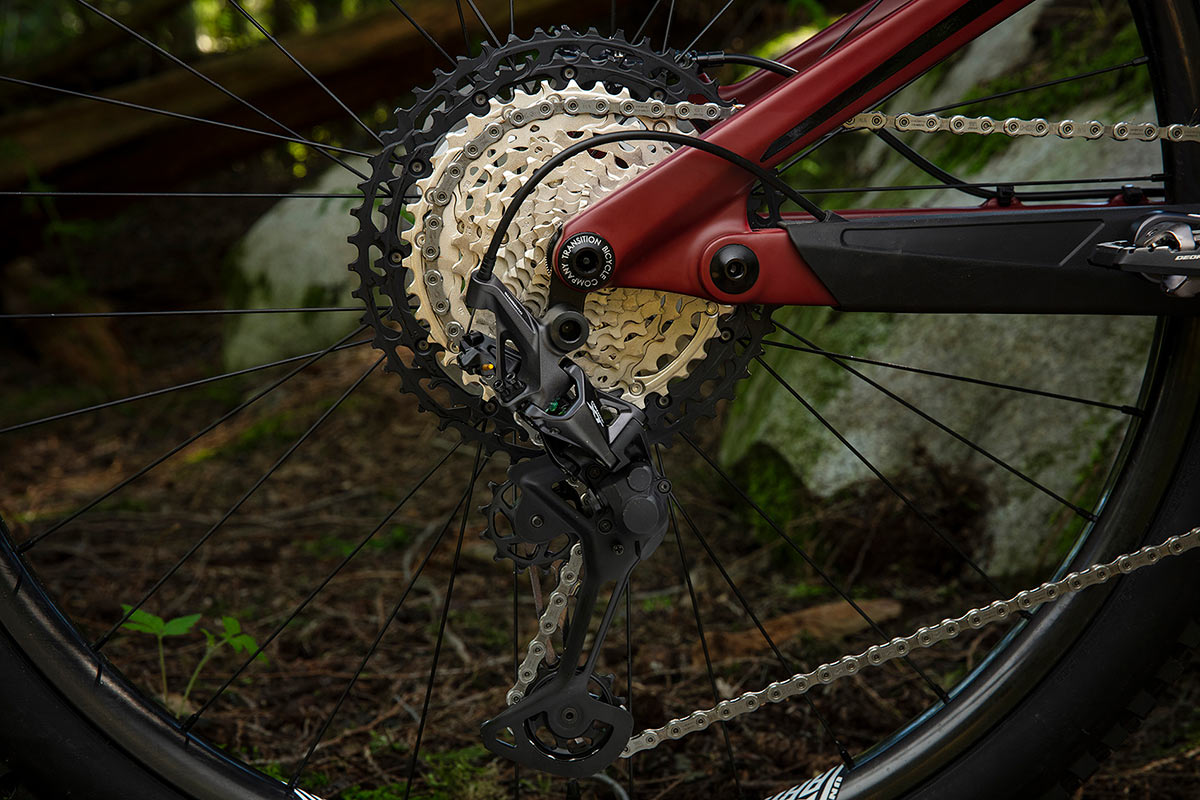
Hyperglide+ makes its move
Hyperglide+ is the evolution of Hyperglide, which was their original computer-designed tooth profile shaping that allowed the chain to move up to a larger cog smoothly without having to first disengage from the cog below it. This meant smoother shifts with no loss in power transmission during shifts. It was a massive improvement in shifting when it was introduced. The new XTR had to start from scratch with new shift ramp patterns and designs to accommodate the much larger cassette, so they used that opportunity to redesign HG into Hyperglide+. HG+ added shaping and ramps to help the chain come back down the cassette to smaller cogs, creating smoother shifts into a harder gear, too. Now, XT and SLX get that, too.
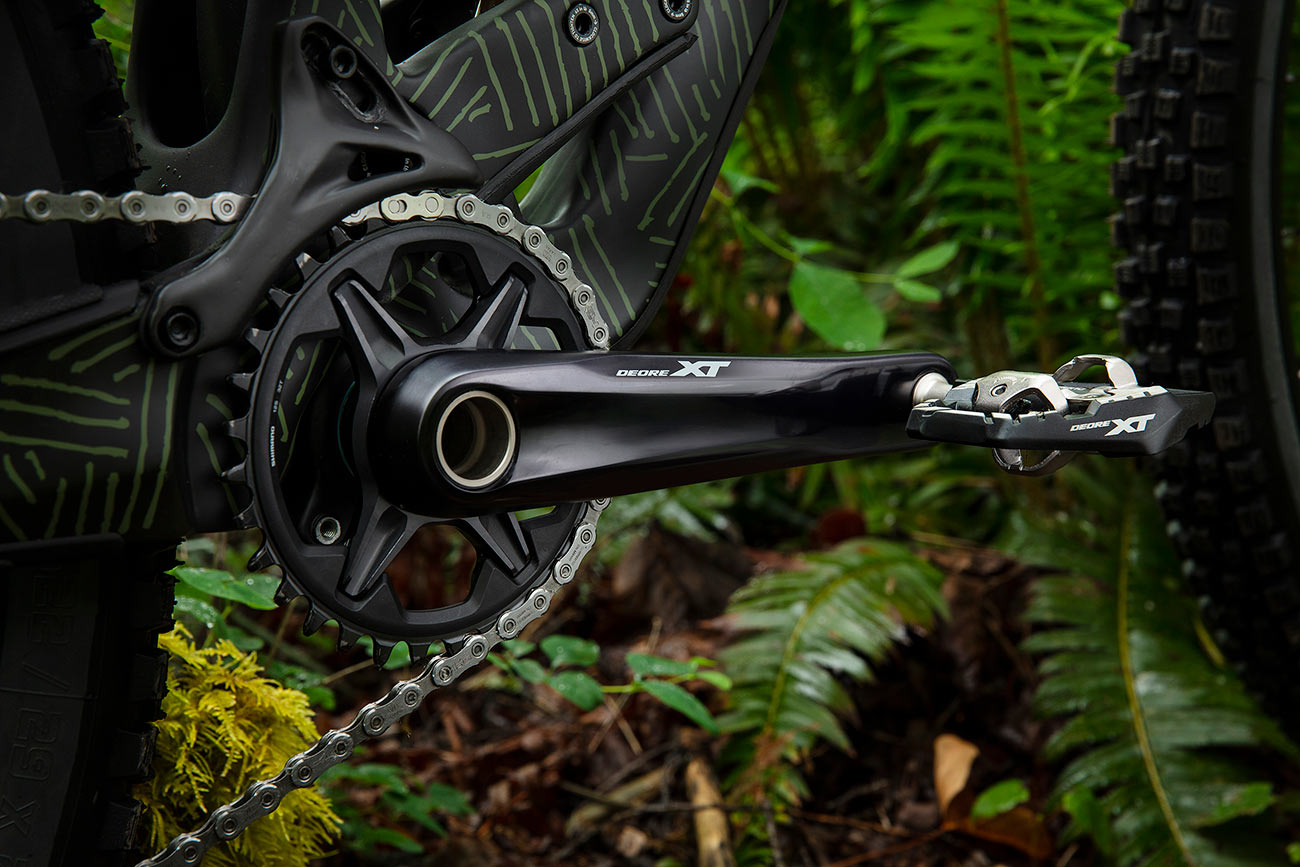
XT cranks & chainrings are all about options
One of the biggest holdups in getting XTR out was the cranks. Their two-piece hollow bonded design was gorgeous and light, but proved to be harder than anticipated to manufacture at scale. The solution was a non-series stopgap, and if this new crank looks familiar, it’s because it’s the MT900 crankset that started shipping to get XTR bikes on the market quicker. Now, it finally gets the XT branding it was born to wear.
The crankset is a hollow forged design, so it’s one-piece. It’s a good bit heavier than XTR, but a lot less expensive. The most important feature is that it comes with more spindle options. Three, in fact, letting you get the one most optimized for your riding style and frame.
A 52mm chainline is the smallest they’ll offer, coming on a narrow 172mm Q-factor crankset. They say it works for both standard and Boost axle spacing, which simplifies SKU counts. If you need a little more clearance at the chainstays for your Boost 148 rear end, like on a burlier all-mountain/enduro bike, they’ll offer a 178mm Q-factor model with a 55mm chainline. And for Super Boost 157mm bikes, they have a 181mm Q-factor crankset with a 56.5mm chain line. And all of these are done with the same crank arms, they just get longer spindles…which are bonded together, so you’d have to replace the driveside cranks arm to change spindle length.
The chainrings are a two-piece construction, which lets them make it far more affordable version that uses a lightweight alloy spider with a steel tooth ring. They’re connected with small fasteners that are not intended to removed. Meaning, you don’t change chainring sizes by bolting on a new tooth ring, you simply swap the entire direct-mount chainring. Which means you can also put XTR chainrings on it if you want.
What about double chainrings?
Yep, they’ll have them in both XT and SLX in 36/26 combos. Those will have a 172mm Q/48.8mm chainline for 142 O.L.D. and 178mm Q / 51.8mm chainline for 148 O.L.D. But why? Because some European brands are still spec’ing them. And Shimano’s MTB product manager told us that having that extra capability makes sense in situations beyond mountain biking. Like, say, if someone can justify the expense of a better bike if they’re commuting to work on it, but then still want something good enough for the trails, too. One bike, two uses, easier to justify to the “accountant” in the family.
DCE+ chains make it all possible
Part of the XTR upgrade was adding chain plate shaping into the mix. The chains extended the inner plate to have more precise contact with the chainring’s teeth. This not only helps guide the chain onto the teeth more smoothly, but it reduces wiggle room between tooth and the outer plates. Combined, this is called DCE+ (Dynamic Chain Engagement+) and it’s supposed to reduce vibration and noise.
It’s also what allows them to share that 52mm chainline between standard and Boost rear axles without requiring too-long chainstays. Normally, you want a slightly narrower chainline for standard 142mm O.L.D. bikes because it better centers the chain with the cassette. But DCE+ supposedly mitigates any off-center issues well enough that you (they) don’t need another chainline confusing their catalog. The real upside? When you do finally upgrade your non-Boost frame, you can (probably) just port this group over with zero issues.
DCE+ chains carry over to all of their 12-speed MTB system, the difference is in construction and materials. XTR uses hollow pins to save about 8g and are actually the strongest chains of the bunch. XT chains get solid pins and lose the SIL-TEC PTFE Nickel plating, but keep the stronger Chromizing on the inner plates.
XT cassettes make the jump to Hyperglide+
We explained HG+ at the start of the post, but if you want to see it in action (and slow motion!), watch that video up top. For both XT and SLX, you’ll find the same 10-51 and 10-45 gear combos as XTR, and both are now 12-speed only. The larger 10-51 is for 1x drivetrains only.
XTR 900 gets three aluminum cogs, then titanium, then steel. XT drops to two alloy cogs at the top (the black ones), followed by all steel cogs for the rest, and SLX gets just one alloy cog, then steel. All three use a special surface treatment to extend the life of the alloy cogs, and all use the same beam support inside to hold everything together.
The new XT rear derailleur
The design is very similar to XTR, and all 12-speed rear derailleurs get a new grease inside the clutch that makes it work better than ever. That grease is also available as a service item that your local shop can order and use to service your current Shimano derailleurs, too.
Compared to XTR, it’s really just a difference in materials. It still has 13t pulleys for both top and bottom, which helps keep the hanger shorter by increasing wrap, so you can have the chain length you need without sacrificing ground clearance. Shimano says proper chain length is critical to good performance from their 12-speed MTB groups, so if you’re DIY’ing that install, ask your shop for a link to the installation service manual online. Oh, and make sure the logos on the chain are facing out…it’s directional.
Fine, I guess I’ll read about the front derailleur…
Not much to say, really. It’s Sideswing only, multiple mount options (D/E/M), and it has a 10-tooth max capacity. Which works out well since the new groups come with a 36/26 combo.

Shape shifting mounts for the Shifters
While there is a direct-mount clamp version for XT’s shifter pods (shown above), the real treat is the iSPec-EV version that has 14mm of lateral adjustment, which they say is more than you’d get with individual clamps, and 20º of rotational adjustment.
The XT shifters get non-replaceable rubberized thumb paddle contact patch, and the paddle is just a bit bigger than XTR to provide more surface area. The trigger has two-way release with multi-release (two gears, with the second click being just a bit firmer than the first one so you don’t accidentally over shift.
If you are running the double chainring, there’s an XT Rapid-Fire Plus Mono Shifter Lever that lets you shift both up and down with a single thumb lever…push it once to shift from the small ring to the big ring, then give it a little click or pull to release it and shift back down to the small ring. Or, use it for a remote lockout lever on shocks that use a push-to-unlock operation.
Brake it down for me…
Leading up to these new groups, Shimano’s mountain bike groups had been slimming down the mounting clamps in an effort to clean up the cockpit. Which worked, but with the unfortunate side effect of introducing flex to the system, so with 2018’s XTR, they pushed the band clamp inboard and added a support nub to keep it from bending inward toward the grip.
The XT and SLX levers have a stiffer lever design with the added support tab, just like XTR. And they get quicker brake engagement with shorter free stroke. They keep ServoWave, which helps deliver more power later in the lever stroke.
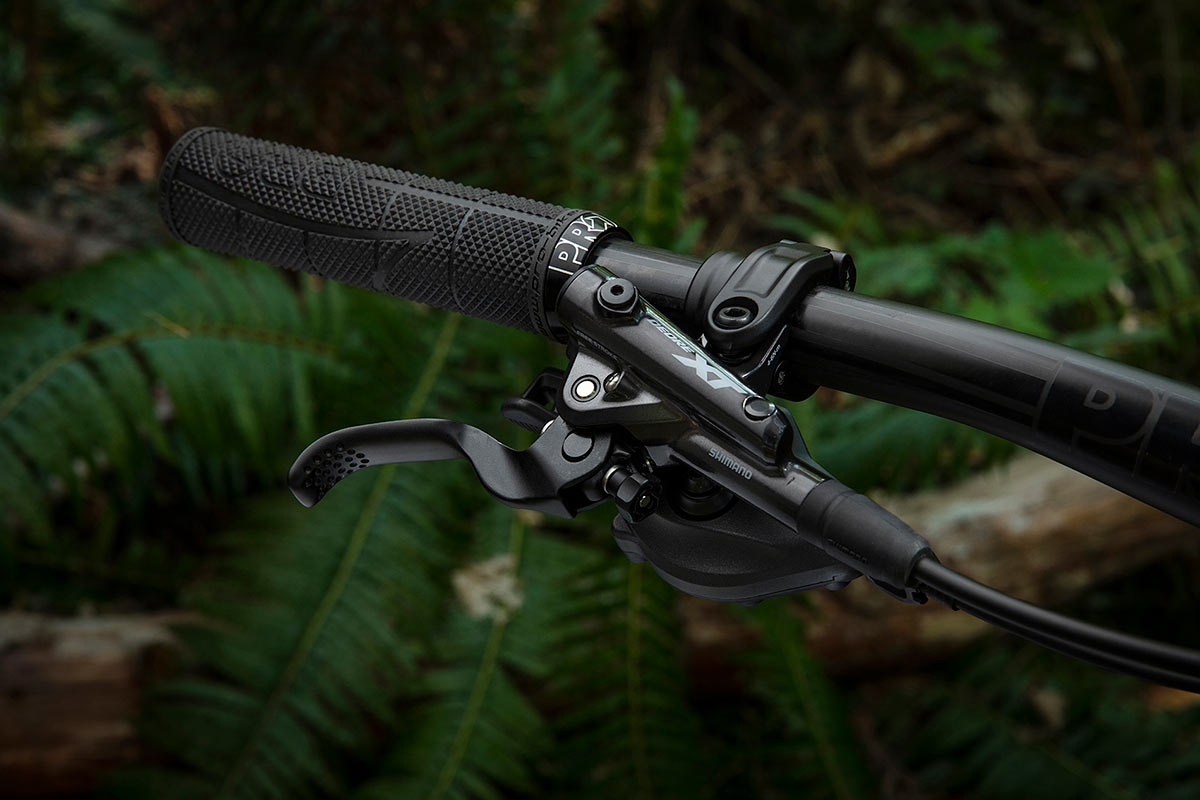
Both groups now have 2- and 4-piston calipers, and the same lever works for either caliper. That’s an important distinction in that XTR gives you a minimalist “race” lever option for the 2-piston brake, and a full featured “enduro” lever for the 4-piston brake.

XT and SLX come with finned metal pads for aftermarket sales, but non-finned resin and metal pads are available separately and for OEM customers. Like XTR, these use a new resin for the non-metal pad option, and they say it’s “dead quiet”, has great modulation, and is 40% more durable than prior versions. They’re also able to use a lighter alloy backing plate, which helps them cool faster. All models use Shimano’s one-way bleeding.

XT gets a new Freeza rotor that uses the sandwiched alloy-between-steel braking surface, which is the same as the XTR rotors but without the special heat-dissipating paint on the exposed aluminum fins.
BTW, both XT and SLX will have six bolt options, too, but you lose the Freeza fins on those, and the SLX loses the IceTech.
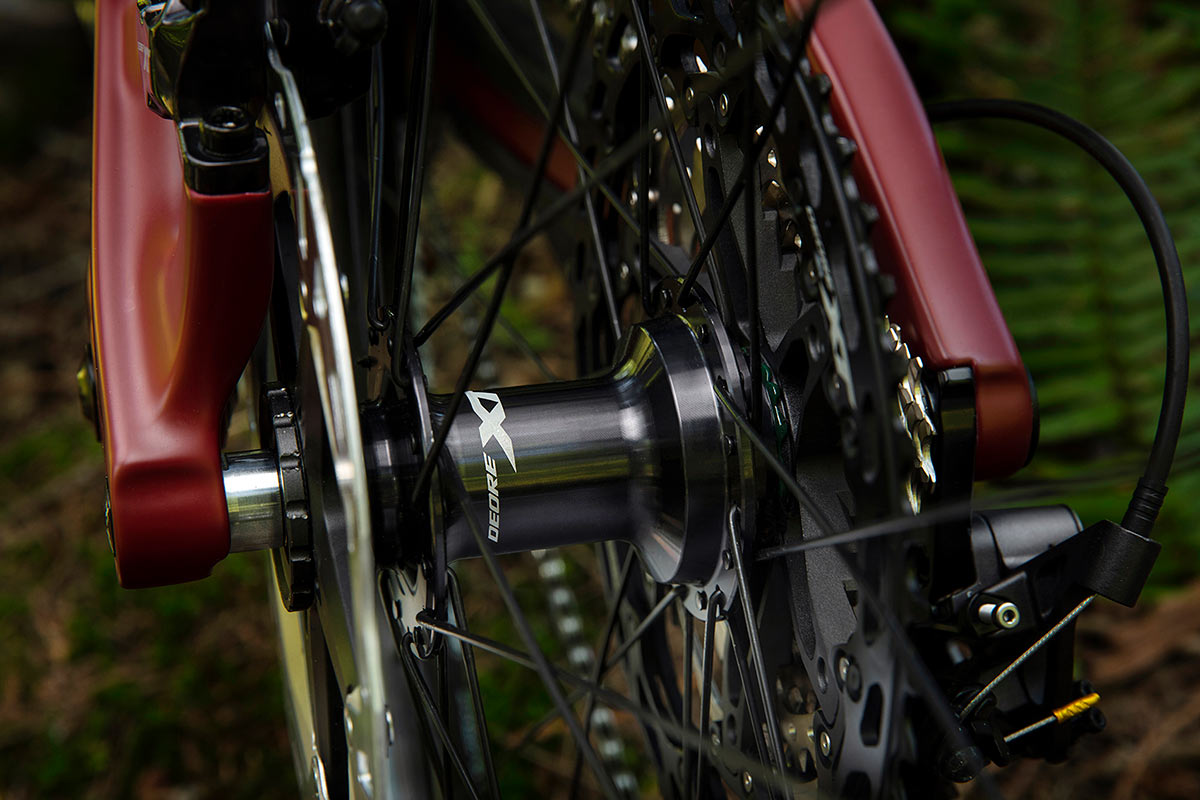
Scylence hubs go away. Say hello to silent hubs.
So, what about the Scylence hubs? With the original XTR design, the drive rings would fully disengage when coasting, but they found out that could lead to long term durability issues (you can read about that issue here). The way it worked was that the floating ring has a spring that would pull it away from the fixed ring when coasting to ensure complete separation. And, thus, silence. The problem was, if you suddenly applied a ton of power, the drive rings could slam together, which could eventually wear them out. The solution was quite simple, they just reversed the spring so that it keeps a very light pressure on the plates. It still relies on the helical splines to push the floating ring firmly into the fixed ring, which has the added benefit of providing massive engagement force.
So, technically, now it won’t be perfectly silent, but it won’t be loud. In fact, it makes something like a light hum that’s barely noticeable unless you’re really listening for it. And the faster you go, the quieter it gets.
Even though the design is almost identical save for a flipped spring position, it’s no longer called Scylence. Internally, they’re just called the “100” hub because it has 100 points of engagement. The helical spline adds a bit of rotation to the system, so it ends up with an effective maximum 7.2º of engagement is the most you’ll ever experience.
Another unique feature? The drive rings are made out of aluminum, so they’re lighter than steel. Which ends up making for a very light hub, comparable to some very high end hubs from other brands. SLX, XT, MT900 and XTR hubs all use this new design.
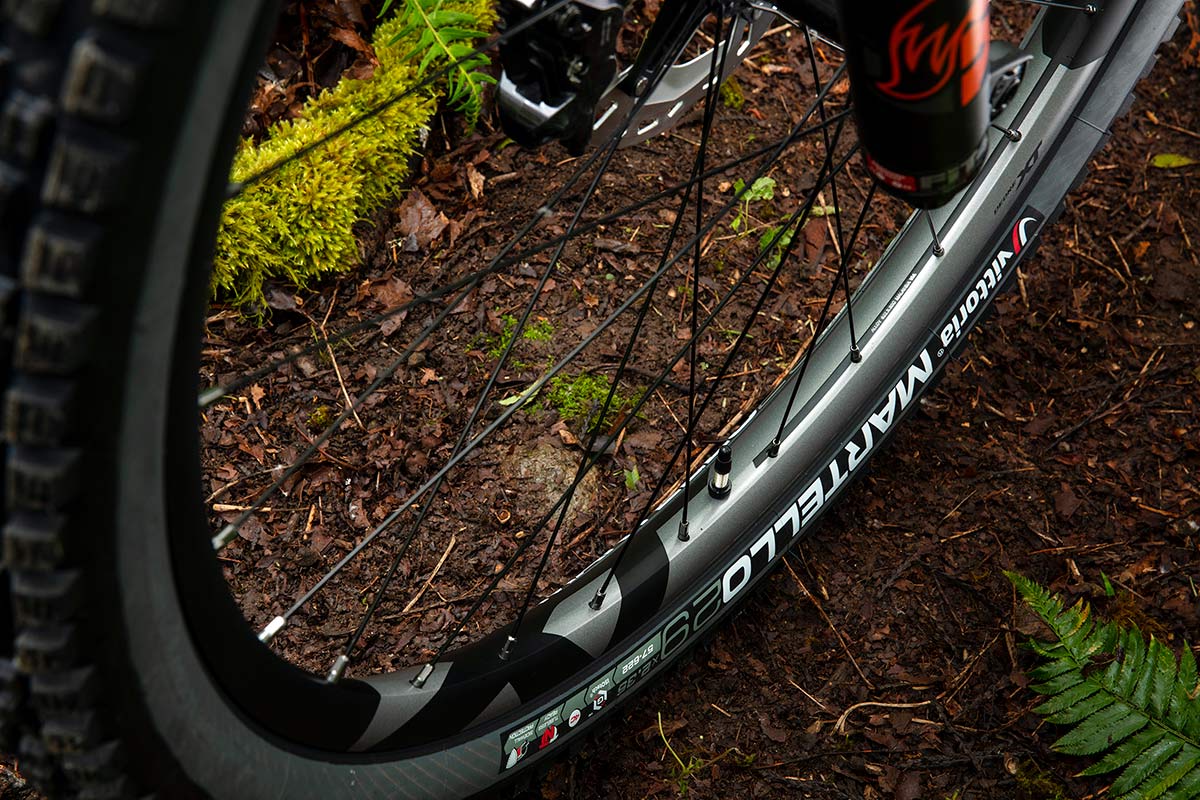
Those hubs will be built into new XT Trail Wheels with the wider flange spacing concept that was introduced with XTR’s standalone hubs, except they were actually able to go wider with XT…and make it work. How? By building it into a wheel system where they knew what spokes and rim were being used, they could bring it all together. The rims are wide, too, which lets them achieve zero dish on alloy tubeless ready rims with a 30mm internal width designed around 2.6” tires.
New XT pedals cover all the bases
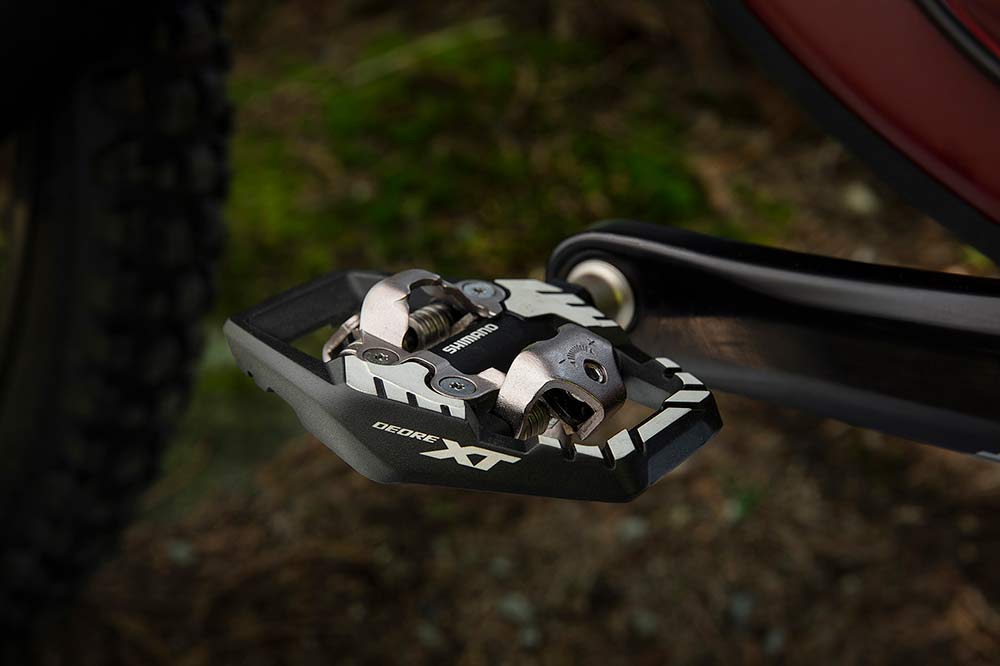
New trail pedal with extended platform to provide more support under the shoe, which lets you wear more flexible, more comfortable shoes so your feet don’t get so fatigued on long days. They still have the regular XC-style pedal with no platform, and a clip-free flat pedal that comes in two sizes to fit a wider range of feet.
Shimano SLX M7100 tech overview
Functionally, the new SLX mountain bike group is almost identical. There are a few key differences, though, and of course finishes and materials help them bring it in at a much lower price point. Surprisingly, there’s not a huge weight gain going to SLX, which means we’ll likely see plenty of mix/match OEM spec on bikes for 2020. Here’s the key differences you need to know:
- Chainrings are painted rather than anodized.
- The SLX chain switches to a SIL-TEC inner plate but has no chromizing treatment.
- SLX shifters lose the multi-release and instant release, so it only shifts to one harder gear at a time. And only when you let go of the lever, not when you press it.
- SLX gets its first four-piston caliper, helping to close the gap between the non-series brakes and XT for riders wanting a more aggressive brakeset that matches the branding.
- SLX brakes lose the free stroke adjustment.
- SLX rotors get IceTech, not Freeza…it’s actually a carryover rotor, same as in the prior SLX group.
- The SLX cassette uses an alloy cog only for the largest cog, all the rest are steel.
But will they e-Bike?
Also worth noting: They make e-bike chainrings, and all of the other XT/SLX parts are already rated for e-bikes…you can even use their standard cranks on Shimano’s STEPS e-bike drive system. They’ve added 36T and 38T options, too, joining the original 34T size.
When do the new XT / SLX groups ship?
Did we save the best for last? Oh yes, we did. Unlike with XTR, all XT and SLX parts will go on sale globally AND start shipping on June 14. Shimano North America says most everything is already in their warehouse. And even better? All of the XTR stuff is shipping now, too, including a revised rear hub that uses the new “100” design.
Need a break? Grab a cuppa, then click over to these two posts to get everything you need to know (plus studio photos for every component) about the new XT and SLX groups:
